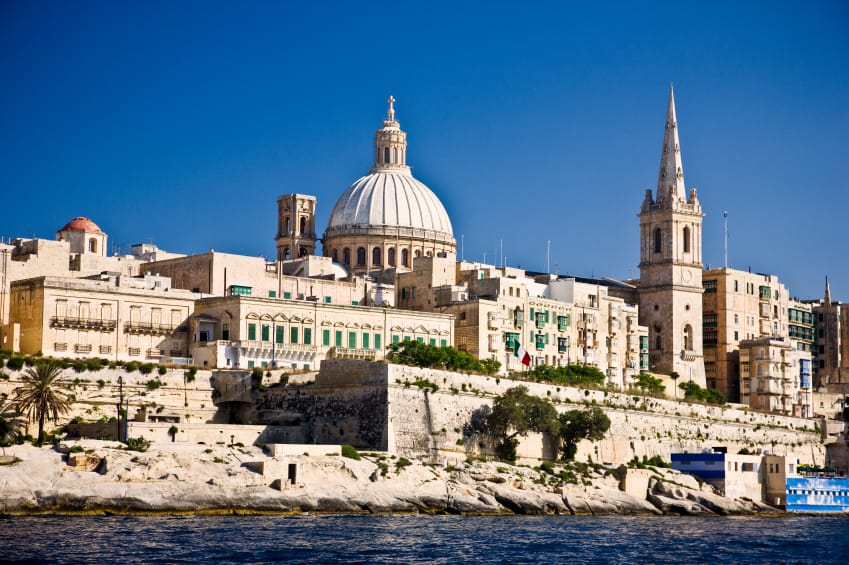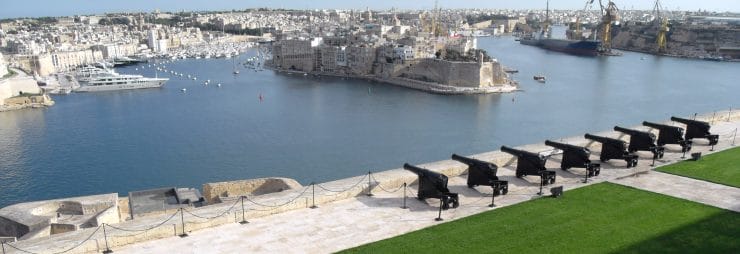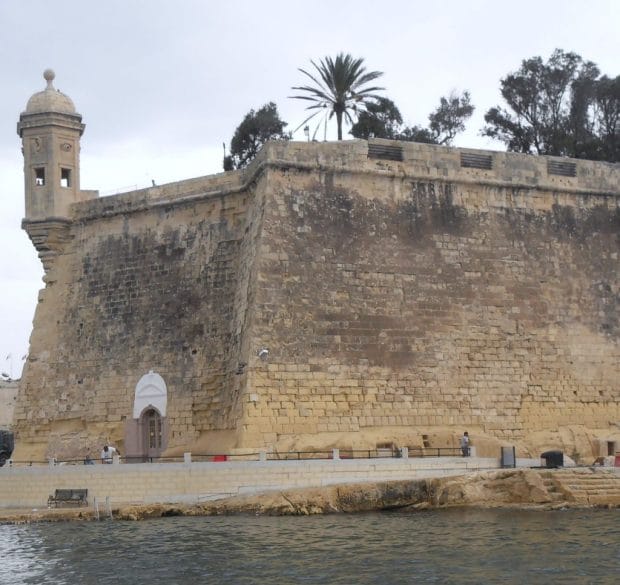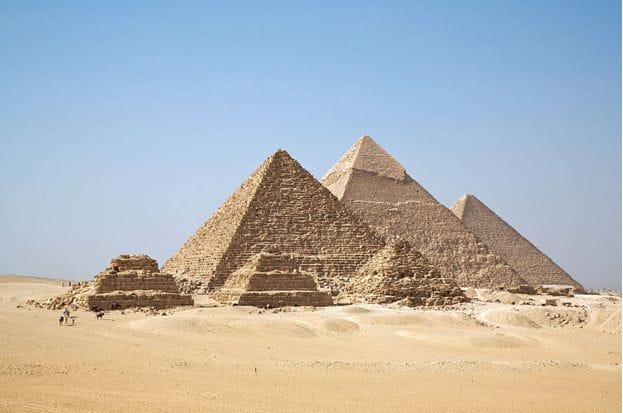The Republic of Malta maybe the smallest country in Europe (around 300 square kilometres), but it has played a major part in Mediterranean history. Strategically located between Sicily and North Africa in the centre of the southern Mediterranean the island has seen a series of invaders and settlers over thousands of years – all leaving their legacy on the landscape of “Melita” (the Roman name for Malta).
Malta’s warm climate, excellent recreational facilities and friendly culture are the big attractions for the majority of today’s tourists, but many also discover the rich history and variety of physical and architectural landmarks.
World Heritage Sites
Surprisingly on such a small island there are three UNESCO World Heritage Sites. The most ancient is the Megalithic Temples. There are more than a dozen temples of which 7 are listed and these can be viewed on Malta and Gozo at Qrendi, Mgarr, Zebbiegn, and Tarxien. These sites feature some of the oldest free-standing structures in the world with the oldest dating back to 5000 BC. The second prehistoric listing is Hal Saflieni Hypogeum at Paola, an underground multi level burial complex from 3600 to 2400 B.C – pre-dating the Egyptian Pyramids, and the only known pre-historic underground temple in the world. As only 60 people a day can visit the underground complex it pays to plan ahead.
However the largest and most visually interesting is the City of Valletta, officially recognised as a World Heritage Site in 1980. The City of Valletta surrounded on three sides by sea has been fashioned by its strategic military, naval and trading location in the Mediterranean. It contains magnificent fortifications and numerous grand buildings and palaces dating from the 16th century onwards set around the waterways of the Grand Harbour. Valletta’s 320 monuments contained within an area of 0.5 square kilometre make it one of the most concentrated historic areas in the world, and as such a rare urban inhabited area that has preserved almost the entirety of its original features.
Valetta Capital City
Valetta however is not just a heritage site. It is also a thriving Capital City with modern cultural and shopping facilities (with many familiar retail names), restaurants, cafes and markets. All routes on the island lead to Valetta – the Arriva and open-top bus services and road networks, water ferries and taxis all focus on the City – but much of the old City is pedestrianised, albeit there are some steep gradients!
Some of the most interesting landmarks also provide the most remarkable views. The Upper Barracca Garden next to the Stock Exchange building and the emerging new open air theatre is not just a beautiful public park, it is also the highest point on the Valetta City walls. The viewing terrace here provides a magnificent panoramic view over the City fortifications, the Grand Harbour and beyond to the the old towns of Senglea and Vittoriosa, as well as the shipyards, marina and cruiseliner terminal. At midday the artillery guns on the Saluting Battery immediately below the gardens on St.Peters Bastion fire their daily salute. On a warm sunny day (which is most days) an experience not to be missed.
For those looking to escape the heat then Valetta provides a number of distractions. The most obvious opportunities are to sit and relax in the Squares and street bars and cafes. However, reflecting the importance of defence in the history of Malta one of the best hidden, secret and coolest landmarks you can visit in Valetta is the Lascaris War Rooms. Located in deep tunnels and chambers 46 metres below the Upper Barracca gardens, you can see the control centre where the air and sea battle for Malta, then landings on Sicily and finally NATO command of the Mediterranean were headquartered.
Wartime Legacy
Although the 2nd World War was a short period in history it had a big impact on Malta. The island location was critically important in the allied victory and it was awarded the George Cross (Malta GC) for its endurance of some of the most intense heavy bombing of the war. As a consequence there was much military spending on island fortifications, port infrastructure and also airfields some of which is still visible around the island today. One of the airfields has become the modern Malta International Airport at Luqa – awarded title of best European airport in 2011. A second airfield at Ta’ Qali has been partly developed into a National Park with large area of substantial planting and landscaping, with part also providing accommodation for a Craft Centre selling jewellery and ceramics, the Glass Works and the Malta Aviation Museum; while another area has been re-developed to provide the new National Stadium complex.
Mdina
A short distance from Ta’ Qali, the walled City of the Mdina is clearly visible. A key landmark not to be missed, this former capital of Malta is located on the highest point in the centre of the island. The first walls here were built in 700 BC by the Phoenicians and the current imposing fortifications are visible from a considerable distance. The city walls viewed from below appear impregnable – although an earthquake devastated the City in 1693. There are excellent panoramic views from the City Walls to the surrounding countryside and to Valetta and the coast.
The small walled medieval City and its stone buildings are beautifully preserved and the absence of car traffic makes exploring the narrow streets of the “Silent City” a pleasant change from the heavy traffic in many tourist areas. A key element of the City profile is the 17th Century dome of St.Pauls Roman Catholic Cathedral and this is one of a number of interesting and imposing religious buildings and Palaces located around the dozen streets of the City – a handful of which have been converted for commercial uses including one that is now the 5 star Xara Palace Hotel and others include Museums, shops and cafes.
Religious Buildings
The Maltese are one of the oldest Christian peoples in the world following St Pauls stay on the island in 60AD. Religion has been a key part of life since and most communities have built their own churches. In fact there are 360 churches and chapels on the islands and many are built in typical Baroque style with large red or silver painted domes which dominate the local skyline. Some of these churches are more like Cathedrals such is the size and adornment that has been lavished on them over the years. These landmark religious buildings remain prominent and significant in both the island landscape and Maltese social and cultural life.
There are many memorable Churches but one of the most imposing is the Carmelite Church dome which stands out above the Valetta bastion walls – the key feature of much photographed outline views of the City from the ferry base on the waterfront at Sliema. Another interesting landmark church is the Rotunda at Mosta which has the 4th largest unsupported dome in the world. In 1942, during a Luftwaffe air-raid, a bomb pierced the dome (two others bounced off) and fell among 300 worshippers awaiting early evening mass. Miraculously it did not explode. A bomb replica is now on display inside the church inscribed “Miracle Bomb”.
Movie Locations
Not surprisingly Malta’s character landscape has played its part in many Film and small screen productions since the 1960s. In fact Malta has been dubbed “the Mediterranean’s mini-Hollywood” by the Times. Malta’s own Film Studios at Rinella have hosted productions while familiar locations such as Ramla Bay, Blue Lagoon, Fort St Elmo, the Mdina, Vittoriosa and Palazzo Parisio have all provided the backdrops to blockbusters such as Gladiator, U-571, The Count of Monte Cristo, Troy, Munich, Marco Polo and Midnight Express as well as dramas and sitcoms such as Game of Thrones, the BBC’s Byron and ITV’s Coronation Street.
Perhaps the most visible film landmark is the Popeye Village located at Anchor Bay near Mellieha. Built as a set for the 1980 Walt Disney musical feature film Popeye, it is today open to the public as an open-air museum and family entertainment complex.
Cliffs and Caves
There are a number of famous natural landmark features in the Malta Archipelago such as the Dingli Cliffs and Blue Grotto but the most stunning are to be found on Gozo. At Dwejra Bay the Azure Window is a natural table like rock arch formation over the sea which has featured in a number of films. The arch of the Window is disintegrating, and is expected it will completely disappear within just a few years. Dwerja has more to offer with to two other famous natural landmarks and both popular scuba diving sites – the Inland Sea, and Blue Hole. The stunning geography of the area was created thousands of years ago when two limestone caves collapsed.
However there are some stunning natural features that are not so easy to see. Malta is one of the most popular diving locations in Europe as its waters are some of the clearest in the world with visibility excellent down to around 30 metres. This clarity gives proficient divers both from shore and boat access to the natural “landmarks” beneath the waves – the caves, tunnels, reefs and rock formations – as well as the downed aircraft and ship wrecks. There are many locations and Dive Companies, but some of the most interesting features include Dwejra Point and Billingshurst Cave near Reqqa Point both on Gozo.
Modern Landmarks
The 21st century has seen new landmarks develop on the Malta landscape. The tourist industry in particular has and continues to create new developments to meet the growing demand from all year round visitors. In St Julians Bay one the best resort locations on Malta is the new Portomaso development. This incorporates everything the tourist or business visitor could want: a 5 star Hilton hotel fronting a beautifully designed resort including residential, business, shopping, eating and recreational facilities around a landscaped marina. The development also provides the islands most iconic modern landmark, the 23 storey Business Tower, the tallest building on Malta which also houses one of the 4 casinos on the island – the venue for the popular “Battle of Malta” poker tournament.
Looking to new landmarks of the future, the Maltese Government is currently considering feasibility plans for a either a road tunnel or a bridge linking Malta with Gozo. However, the reality of this is some way off. In the more immediate future, Valetta recently chosen as European Capital of Culture for 2018 is undergoing a large scale renovation with significant involvement of world renowned architect Renzo Piano. Proposals are now in late stages of construction and involve a new 23,000 square metre Parliament Building in Freedom Square, re-modelling of the City Gate, and the creation of a new open-air theatre now rising phoenix-like on the site of the old Opera House left ruined since bombings in 1942. These are the new landmarks of Malta.









